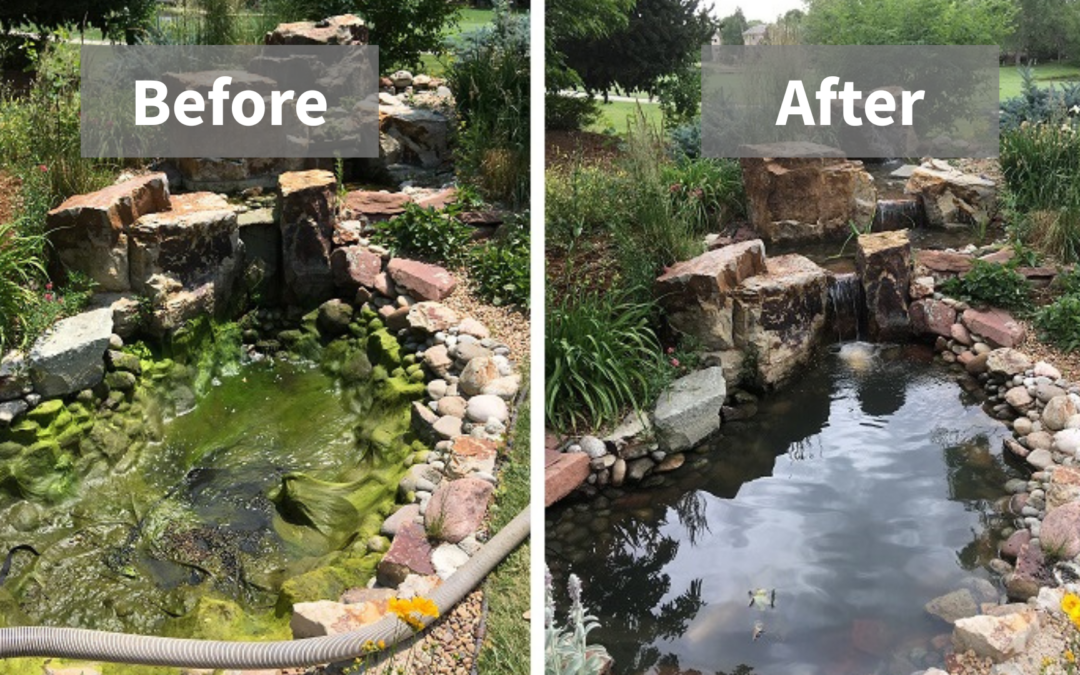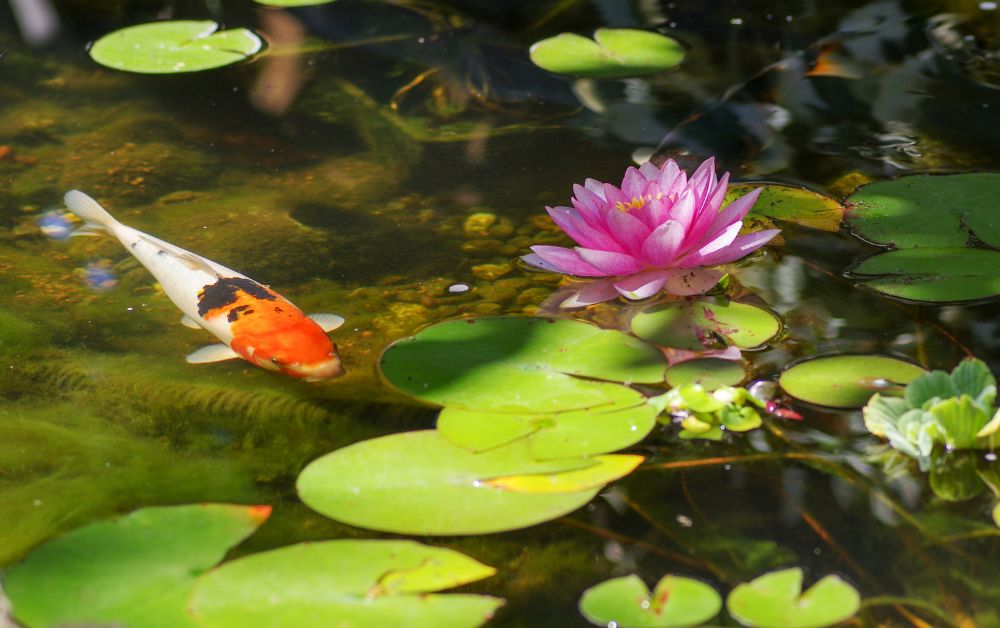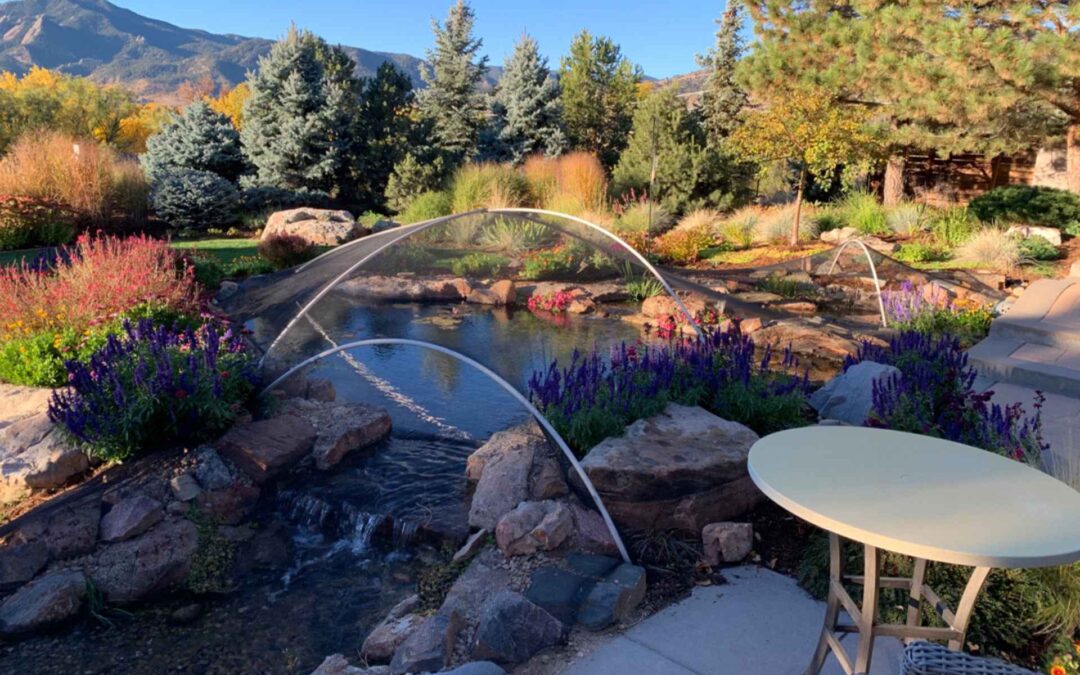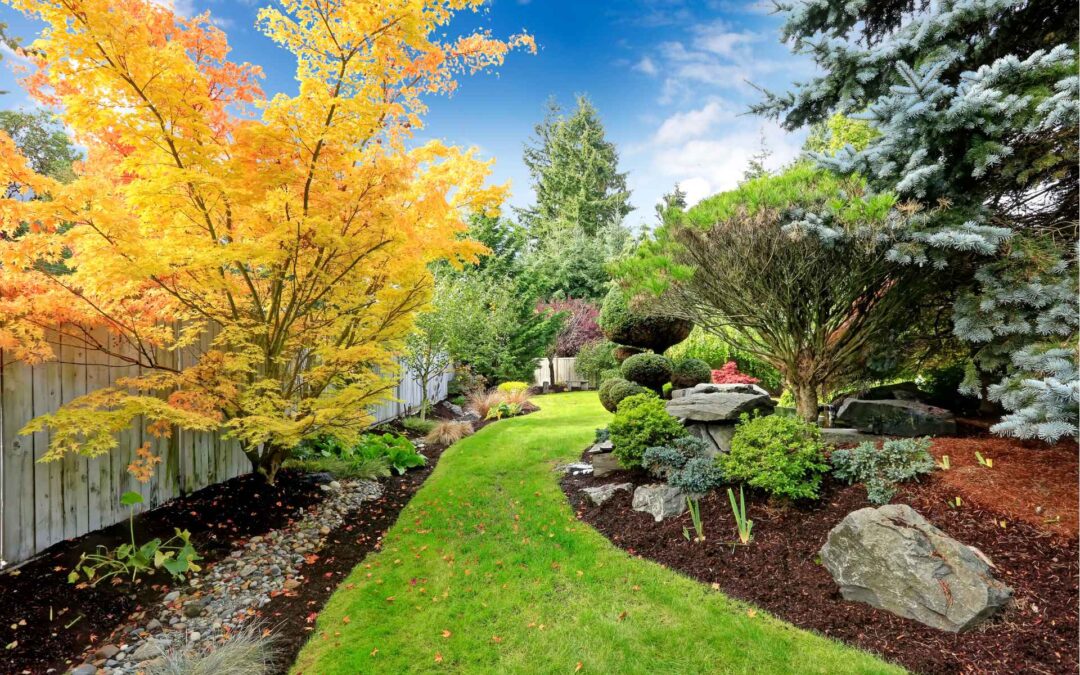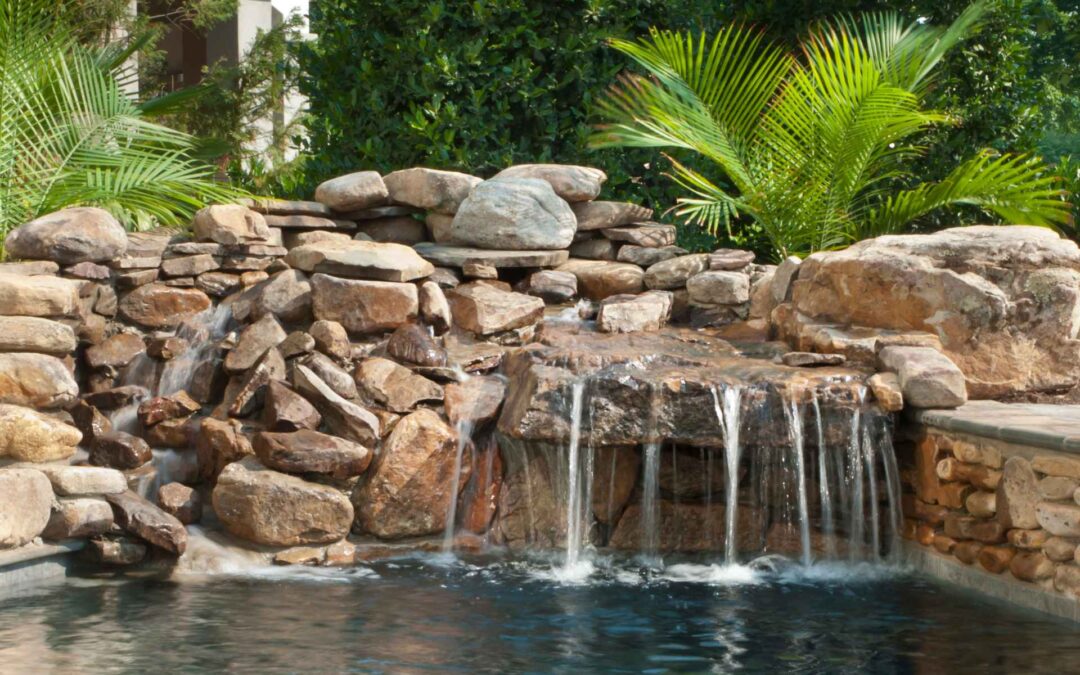The pond autofill is most commonly attached to a zone in the sprinkler system. The autofill tops off the pond when the water gets low. This saves you from having to drag the hose over to the pond each week.
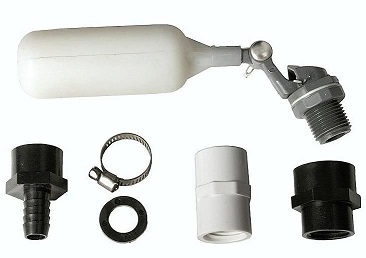
How does the pond autofill work?
The autofill works just like the float in the tank of a toilet. For instance, when the water level goes down in a pond, the float sinks along with the water level and therefore, allowing the valve to open. When the sprinkler zone attached to the autofill is activated water will flow in if the float has sunk. After that the water will stop when the water level comes back up to normal pond level and the float, floats back up, shutting off the valve.
If you don’t have a pond autofill and the pond water goes down, how do you know it’s not just evaporation?
In Colorado 1 to 3 inches of evaporation IN 1 WEEK is normal. It doesn’t matter how large or small the pond is. NO, it doesn’t. One type of autofill looks similar to a toilet bowl float (below). There are other kinds of autofills.
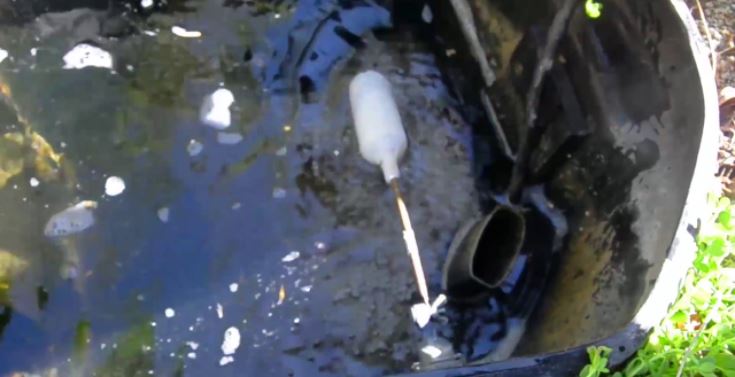
How should an autofill be installed?
The most typical placing an autofill is inside the skimmer. To install it a hole is drilled through the top side in the skimmer and set at just the right place to keep the pond water right where it should be. The picture below shows a cross section of an Aquascape skimmer. The autofill in this type of skimmer allows larger debris to be caught in the basket. A skimmer basket like this allows water to reach the autofill before it reaches the filter pad. The filter pad strains out smaller debris to protect the pump.
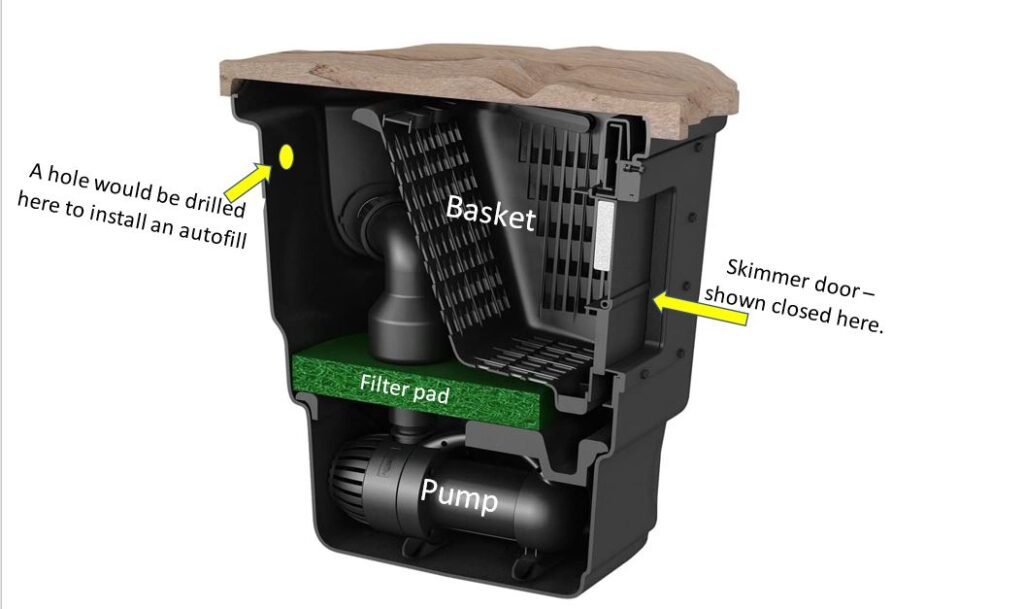
The wye strainer, pressure reducer and ball valve – a critical part of the pond autofill
For best results, install the autofill with a wye strainer and pressure reducer. The strainer catches small debris to keep the autofill valve from getting clogged and causing the valve to get stuck open and overflowing the pond. Minerals in the water can build up and impede the autofill valve from closing. Without a wye strainer the autofill valve gets stuck open the pond can over fill, flooding the surrounding areas.
When the autofill is attached through the sprinkler system it is highly likely to get small pieces of irrigation plastic in the water. This can happen as the irrigation system is worked on and trimmed or new pieces are inserted into the liner. These tiny pieces of plastic are enough to affect the autofill if not caught by a wye strainer. The surface area of the strainer is great enough that it rarely has to be opened up and cleaned out.
What about the pressure reducer?
A pressure reducer makes sure the pressure cannot get too high and blow out the autofill. If the pressure does not need to be reduced, it has no affect. It is more of a fail safe.
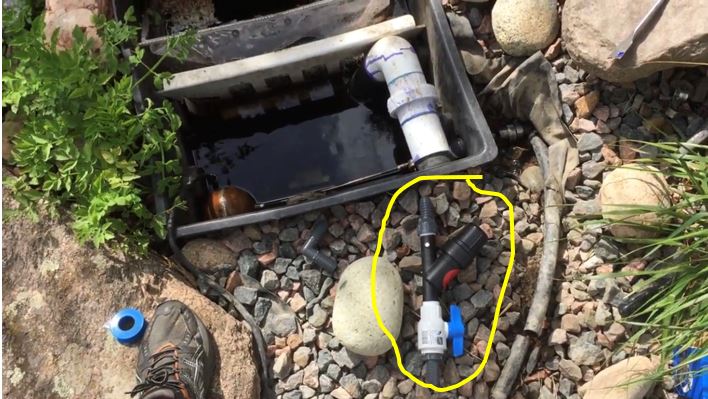
The pressure filter reduces the water pressure to the autofill coming from the sprinkler system. An Autofill does best when the psi (ponds per square inch) is between 10 to 15. Did you know that different cities and even different neighborhoods may have variance in water pressure? Boulder has some of the highest water pressure is often between 120 to 135 psi.
A ball valve installed directly before the autofill is not comopletely neccessary but comes in handy. It allows the autofill to be turned off when maintenance is done on the pond. A simple turn of the blue hande keeps it from filling up the pond while it is drained for cleaning and repairs (shown below).
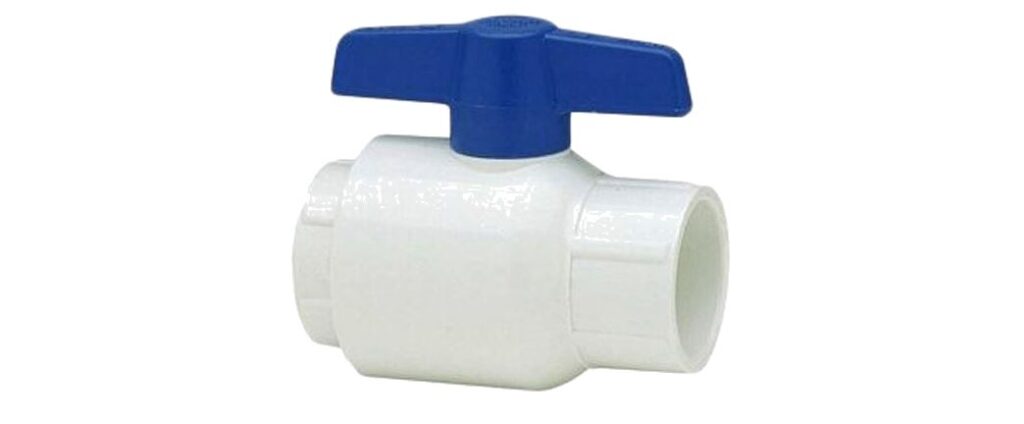
What if I don’t have an Aquascape skimmer?
There are many types of skimmers. The skimmer shown below has a net and a verticle filter pad. While many autofills are installed just over the pump, there is a risk to this set up. When the net and filter pad become clogged, the water level in the skimmer box is normal, but the water does not make it to the autofill, causing it to continue filling and even overfilling the pond! To keep this from happening, make sure you are cleaning out the net and cleaning the fitler pads at least once a week. During the Fall when there are leaves in the area it may have to be done more often.

Alternatives to skimmer pond autofill placement
When the skimmer is not the best option for the skimmer placement (like a floating skimmer) a hudson valve can be installed directly in the pond, on the side and hidden with rocks. Make sure to install is low enough that the pond is not accidentally over filled.
The Hudson Valve
A hudson valve is another type of autofill that takes up less room than a traditional or company autofill. the float mechanisim is inside the round piece. A hudson valve must be installed vertically. (The hudson valve is shown below on the left and on the right is seen in a pondless waterfall vault.)
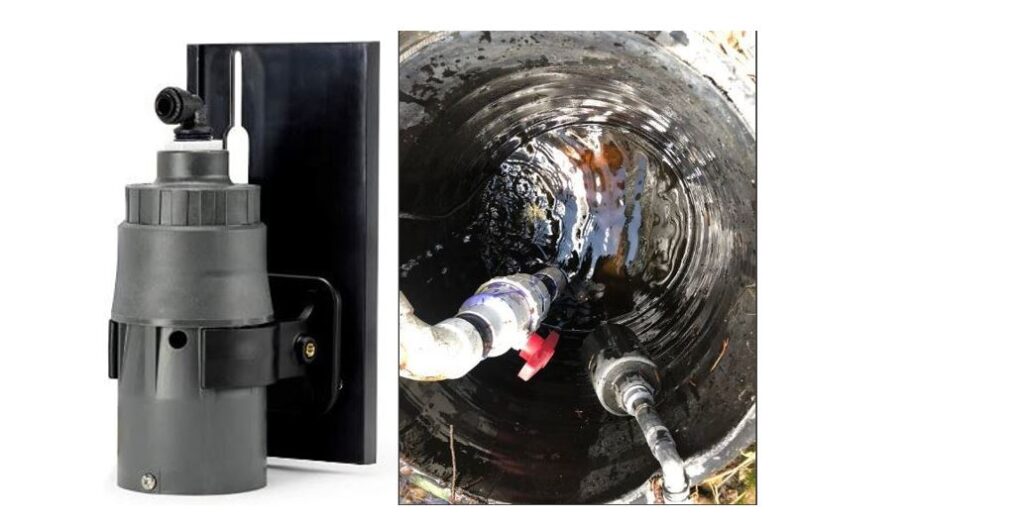
Detecting water loss and what is NORMAL?
In Colorado 1 to 3 inches of evaporation IN 1 WEEK is normal. It doesn’t matter how large or small the pond is. NO, it doesn’t.
How to test the autofill to make sure it’s working
To test the autofill, turn on the sprinkler zone that the pond autifll is attached to and hold the float down. It the valve allows water to come in, the valve is working.
Another way to test it is to turn that sprinkler zone off, or tie up the float so it does not come on. Left for a week, the pond water should evaporate roughly 2 inches. Allow the float to be let loose while the sprinkler zone is on and watch to see if the water does, in fact, start to fill.
Why is it important to keep an eye on the water level?
When there is water loss and it goes unnoticed:
- the pump could burn out
- fish could die if water gets too low
If an autofill is present water loss may go unnoticed but there will likely be signs:
- The fish are getting sick and you can’t seem to pinpoint what is going on. This is adding chlorine to the pond which can hurt the fish. We recommend using an Autodose if you have and Autofill to protect fish from unexpected chlorine.
- There are crazy amounts of string algae that are not normal for your pond. A pond autofill will continue to replenish the water even when there is waterloss; subsequently upsetting the balance of the eco system and causing algae! If you notice an abnormal level of stinr algae, test the pond for waterloss.
- A higher than normal water bill points to the need to do a leak test on the pond.
Testing for pond waterloss
- What if there is an autofill?
- To do a leak test the ball valve must be closed. The test must be done without interference from added water. This includes rain. If it rains, hold off on the test until things are drier.
- While performing a water test, the ball valve should be closed. A ball valve allows the autofill to be turned off without turning off the entire sprinkler zone.
- To stop the autofill from running without turning the sprinkler zone off tie it in place with string.
- Turn off the waterfall for the day or 24 hours (Healthy fish will be ok for this short period of time) Fill the pond to its normal full level.
- Measure the level of the water in the pond. No, really. Measure from a flat rock or the top of the skimmer down to the water level to get accurate information. Eyeballing it is not accurate.
- Check the water level at the end of the day or the next morning. 24 hours is a good basic look at how the water is holding.
Water didn’t recede with this test?
When the water level doesn’t go down at all, the waterfall needs to be tested as it may be losing water.
When the water does go down in this test there is waterloss in pond itself. Allow the water continue to recede until it stops but, don’t go longer than a day or 2. Where the water levels off at is where the leak is. It may be from low liner, a puncture or and issue with a faceplate.
If you have a pondless waterfall the same thing applies, just mark the level of water in the water retention area.
Autofill Conclusion
Pond autofills are a fantastic piece of equipment at that will save you time. Make sure you understand how it works and that it is installed correctly. Need help? Contact us now to talk about having an autofill installed in your pond.


